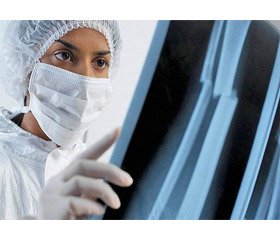Журнал «Травма» Том 16, №1, 2015
Вернуться к номеру
Consequences of treatment of patients with plural diaphyseal breaks of long bones of extremities
Авторы: Krivenko S.N. - Department of traumatology, orthopaedy and SUS SSPI; Donetsk national of medical university the name of М. Gorki, Ukraine
Рубрики: Травматология и ортопедия
Разделы: Справочник специалиста
Версия для печати
The study of consequences of treatment of patients with the plural difisal breaks of long bones of extremities envisages determination of his quality, efficiency, errors on the stages of treatment, complications that arose up in the process of treatment, their warning and rehabilitation. Degree of anatomic and functional renewals of extremities determined on a form extremity, or absence of presence of deformation, her expressiveness, degree of consolidation of breaks, mobility of joints, standing function extremities, terms of treatment and nonoperability of victims. The results of treatment are considered in the nearest terms (1 to) after a trauma, and also in remote (12 from 1 to) terms. The combined tactics of operative interventions at the plural traumas of locomotorium consisted of the use of external osteosintesis of twoosseal segments(forearm, shin) regardless of character of breaks, internalо osteosintesis of the closed slanting, transversal, obliquely-transversal and comminuting breaks of onebone segments(shoulder, thigh) or external of their osteosintesis at presence of open and multicomminuting breaks. In the early period of traumatic illness the medicamental correction of the educed exchange and immune violations was conducted all victims. The terms of union of plural breaks of long bones of extremities at combined osteosintesis laid down on the average from 4,3 to 5,4 months. Comparative study of the nearest consequences of treatment of patients with the plural diafisal breaks of long bones of overhead and lower extremities that treated oneself after helping of external of osteosintesis and combined osteosintesis, showed efficiency of application of the combined method of treatment of these breaks. The remote results of treatment of plural breaks of diaphysis of long bones of extremities are studied in 100% of patients in terms 12 from 1 to. The analysis of consequences of treatment of plural diaphysis breaks of long bones of overhead and lower extremities showed depending on character of breaks, that good results are in the group of patients that treated oneself by means of combined osteosintesis were attained in 107(76,4%) victims with the closed breaks, in 28(20,0%) - with open and in 5(3,6%) patients at connection in them open and closed breaks. In the group of patients, where external osteosintesis was the basic method of treatment, good results are attained accordingly: in 19(27,6%), 6(8,7%), 3(4,3%) patients. Satisfactory results, both in one (5-2,9%) and in other the groups were set by us in 5(7,2%) patients. Unsatisfactory consequences were observed in 2(1,1%) victims in the group of patients that treated oneself by means of combined osteosintesis with the presence of open breaks and connection of open and closed breaks. In the group of patients, where external osteosintesis was the basic method of treatment, bad results are marked in 5(7,2%) patients with open breaks, in 3(4,3%) - with open and closed breaks and in 1(1,4%) victim with the closed breaks. Depending on the line of fracture more favourable results were attained for patients with slanting and transversal planes - in the group of patients that treated oneself by means of combined osteosintesis - in 123(70,7%) and in the group of patients, where external osteosintesis was the basic method of treatment - in 28(40,6%). Satisfactory results at these lines of fracture in one group are not marked, and in other they laid down 2,9%(2) cases. Unsatisfactory consequences in both these groups were not observed at the transversal and obliquely-transversal breaks of diaphysis of long bones of extremities. At presence of for the victims of comminuting and multicomminuting breaks in the group of patients that treated oneself by means of combined osteosintesis, the good results of treatment are attained in 18(10,3%) sick, satisfactory - in 14(8,0%) and unsatisfactory - in 2(1,1%). In the group of patients, where external osteosintesis was the basic method of treatment at presence of such exactly lines of fracture, the good results of treatment are not got for any patient, satisfactory - in 15(21,7%), unsatisfactory - in 9(13,0%) victims. By us the studied consequences of treatment of plural diafisal breaks of long bones of overhead and lower extremities depending on the level of break. The most favorable results are marked at presence of breaks at the level of overhead one third and middle one third of diaphysis of long bones of extremities, both in one (156-89,7%) and in other (34-49,3%) the groups. It is explained by the features of blood supply of these departments of diaphysis of long bones of extremities. The unsatisfactory results of treatment are more often marked at presence of at sick breaks at the level of lower one third of diaphysis of long bones of extremities: in the group of patients that treated oneself by means of combined остеосинтеза, - in 3(1,7%), in the group of patients, where external osteosintesis was the basic method of treatment - in 6(8,7%) victims. The satisfactory results of treatment had an insignificant difference between indexes in both groups - (12- 6,9%) and (5-7,2%), and answered the breaks of diaphysis of long bones of extremities at the level of lower one third them.
The analysis of data showed that in the group of patients that treated oneself by means of combined osteosintesis, application of these methods of treatment assisted the achievement of good results at 86,7%(151) cases.

